The 2018 IPSC Shotgun World Shoot in Chateauroux, France, is over and the winner in Open division is Josh Froelich (USA).
Last week we published a collection of photos from the competition.
The location was about 3 hours south of Paris, with 30 stages and 6 days off shooting at a superb shooting range.
The Firearm Blog was there taking part in the competition and we had the opportunity to meet and interview Josh Froelich (USA) to learn more.
Josh Froelich won the World Shoot overall and the Open Division.
(Top picture by Sky Killian. Below by author)

First of all: congratulations from all of us on your win! It looked like you enjoyed it at the top of the podium!
Tell us, after 6 days and 30 stages of IPSC shotgun how does it feel to be a World Champion?
“It feels amazing to land the win at the IPSC World Shoot. 12 months ago i made a decision that this match was going to be my primary focus for the 2018 shooting season and i dedicated a significant amount of my training, mental energy and year to preparing. When all that work pays off and I realized I won the match, the emotion and joy was overwhelming.”
I had a look at some of your videos on social media. Can you describe your shooting style?
“I believe I have a diverse well rounded shooting style. I am naturally a position to position shooter with fast movement in between shooting positions, but i have been working hard over the last 24 months to become more well rounded. I spend much of my range training time working on shooting on the move so when the stage in front of me demands it i can perform. I focus on the fundamentals and becuase of this i am a very technical shooter. I dryfire every single day to polish my firearm manipulations and movements and that makes performing in a match much easier.”
This is a Firearms blog so we’re quite interested in what you shoot. Which shotgun do you use and what modifications have you done to it?
“I shoot the Dissident Arms KL12 shotgun. They made a JF12 version of this gun specifically with the mods i like best and that gun (my configuration) is available as a standard option from Dissident. The guns are built on the Molot Vepr12 platform and the mods include, Complete fire control tuning, lengthened forcing cone, Internally threaded chokes, JP AR handguard, tig welded sight mount base, left side charging handle, extended mag release, AR stock, flared magwell and DA phoenix compensator.”

Josh Froelich and Scott Greene at the Shoot Off. Scott won Open Overall Shoot off. Picture by Sky Killian.
Which trigger do you use?
“I actually run a 5 pound OEM trigger that DA worked over for me. I ride the reset on triggers and when shooting slugs and buckshot the guns bumpfire on me with the lighter trigger options. This is a huge problem for me when mixing slugs, buck and birdshot in mags in the USA matches as it throws off the round count and my ammo order in the mag causing possibly dangerous conditions like slugs on close steel, so I avoid it altogether by sticking with a heavier trigger with a long pull.”
Can you tell us a bit about which sight you use? From what I could see, it looks like you have a two-sight setup.
“I run 2 Vortex Razor 6 MOA red dot sights on my shotguns. both dots are zeroed at 50 yards with slugs and i use the offset dot for shooting around tight corners and around walls to allow me to keep a better posture and head position while performing these tasks.”
Which ammunition do you use, and why?
“I shoot Federal Premium Ammunition exclusively. The quality of the ammo I shoot is superb. For birdshot I shoot Gold Medal Grand 1235fps, 1 1/8oz loads in 7.5 or 8 shot, I run Federal Truball 1325fps 1oz slugs and I shoot 9 pellet 1325fps federal low recoil buckshot – all of this ammo performs amazingly well through the Dissident Arms shotguns.”
How do you work with your chokes?
“I know my chokes inside and out. I shoot everything from Cylinder to Turkey depending on the stage. I shoot Briely chokes that are internally mounted in my shotgun. I used a tool to reach down into the muzzle brake to swap chokes vs having to take the brake off”
I guess rifle shooters had an advantage at the point heavy slug and buck stages (>22% of the match). Did you feel the same and what’s your technique?
“I do shoot a lot of rifle including 223 and 9 mm versions of JP rifles and I do believe that helped me perform well on the slug stages. Buckshot on the other hand is new to me. We don’t shoot much of it in the USA and when we do we use flight control buckshot which is not allowed in the IPSC game. This is my biggest gap in the IPSC game. I am going to spend quite a bit of time with buckshot before I shoot my next IPSC match.”
Did you have any issues with your equipment during the match?
“I had zero issues with equipment at this match. Not one issue.”
The fear of something breaking down with my shotgun was a big one for myself, as spares for the Russian shotguns are a bit hard to get by. Did you prepare for this, or would you share a shotgun within the team?
“I brought two Dissident Arms shotguns to this match. I try to bring a backup just in case to every gun competition. Just for peace of mind.”

Picture by Todd Overland.
IPSC differs both in terms of rules and somewhat in what kind of magazine you may use (10 round maximum for box, no drum magazines, scoring etc.). Was this something that bothered you? Did you read the IPSC rulebook every night?
“I spent 6 months studying IPSC stages and stage designs on Youtube watching some of the top shooters in the world navigate stages at matches like CESO, Moscow Cup and past World Shoots.
I understood the style and practiced this heavily. I also studied the rule-book to make sure I understood the differences between IPSC and US action shooting. None of this bothered me at the match”
The shooting bays in France allowed for quite long shots (for shotgun), with small mini poppers at almost 30 meters and a lot of tight No Shoots.
How did you chose chokes (and perhaps ammunition) for various stages and targets?
“I study choke pattern often in practice and know exactly what choke is needed at distances like that. I also trained for very tight no shoots and worked speed training with full choke while shooting on the move for this match. None of the targets were intimidating at this match with the level of training we put in here at home in the USA. Except of course the 32 yard buckshot targets, those were something i was not prepared for.”
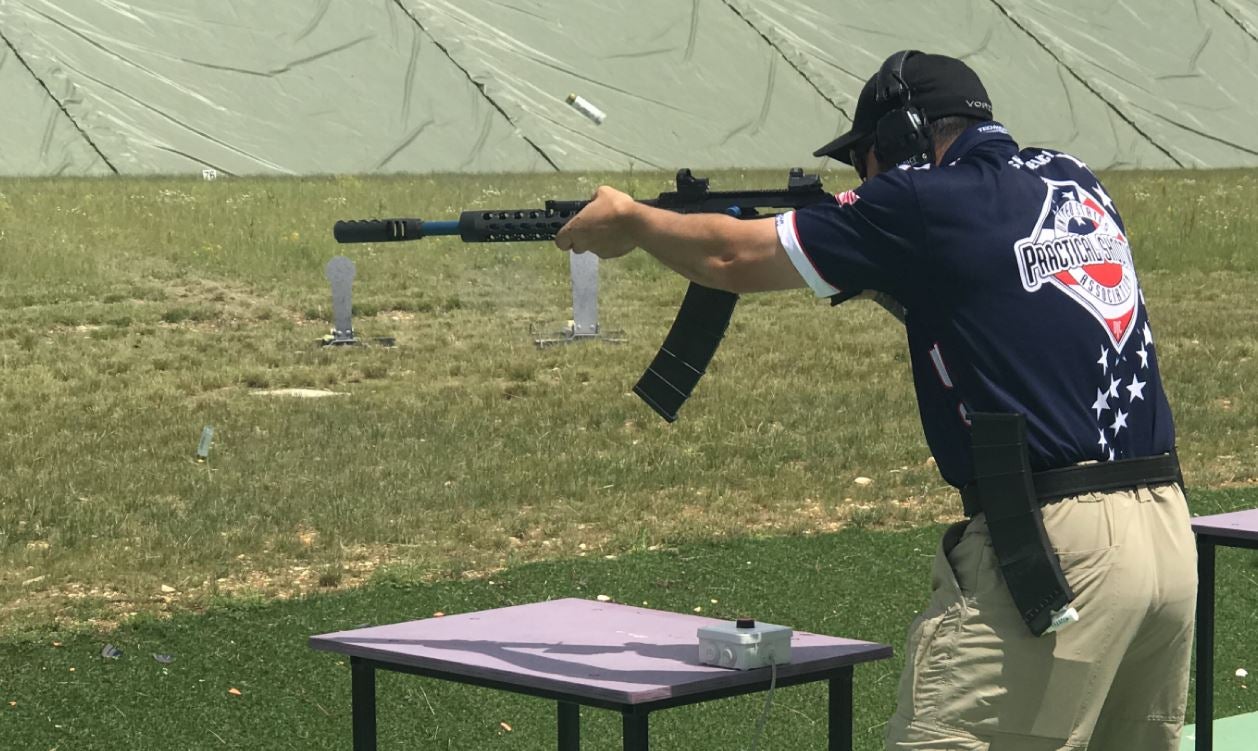
How do you prepare yourself for the longer stages, where there’s usually a lot of memorization and segmentation involved to succeed and plan magazine changes?
“None of the IPSC stages were difficult to remember and visualize. Here in the USA in 3 gun we have stages 3-5 times bigger than anything that was at this match with 3 guns. US 3 gun stages challenge the mental game of the shooter far more than the IPSC 30 round or less courses do, so I was very prepared for this match.”
Is there a certain stage that you remember?
“I still remember every target on every stage from this one. They are locked in my head! One of my favorites was stage 20 – Ancient Greece. I loved the bridges and retreating through the course of fire.”
(Author’s comment – There were a few possible DQ traps on this stage, and a few competitors also got DQ:ed as they broke 90 degrees. It was a challenge retreating over the second bridge, as it was 45 degrees to the stage it was hard to keep a visual reference.)
Did you manage to keep the whole match without any misses or no shoots? (penalty targets)
“No I certainly did not. I had a good number of penalties in this match, but my speed offset them. The biggest issues were on buckshot so that is where i am going to concentrate my efforts before my next IPSC match.”
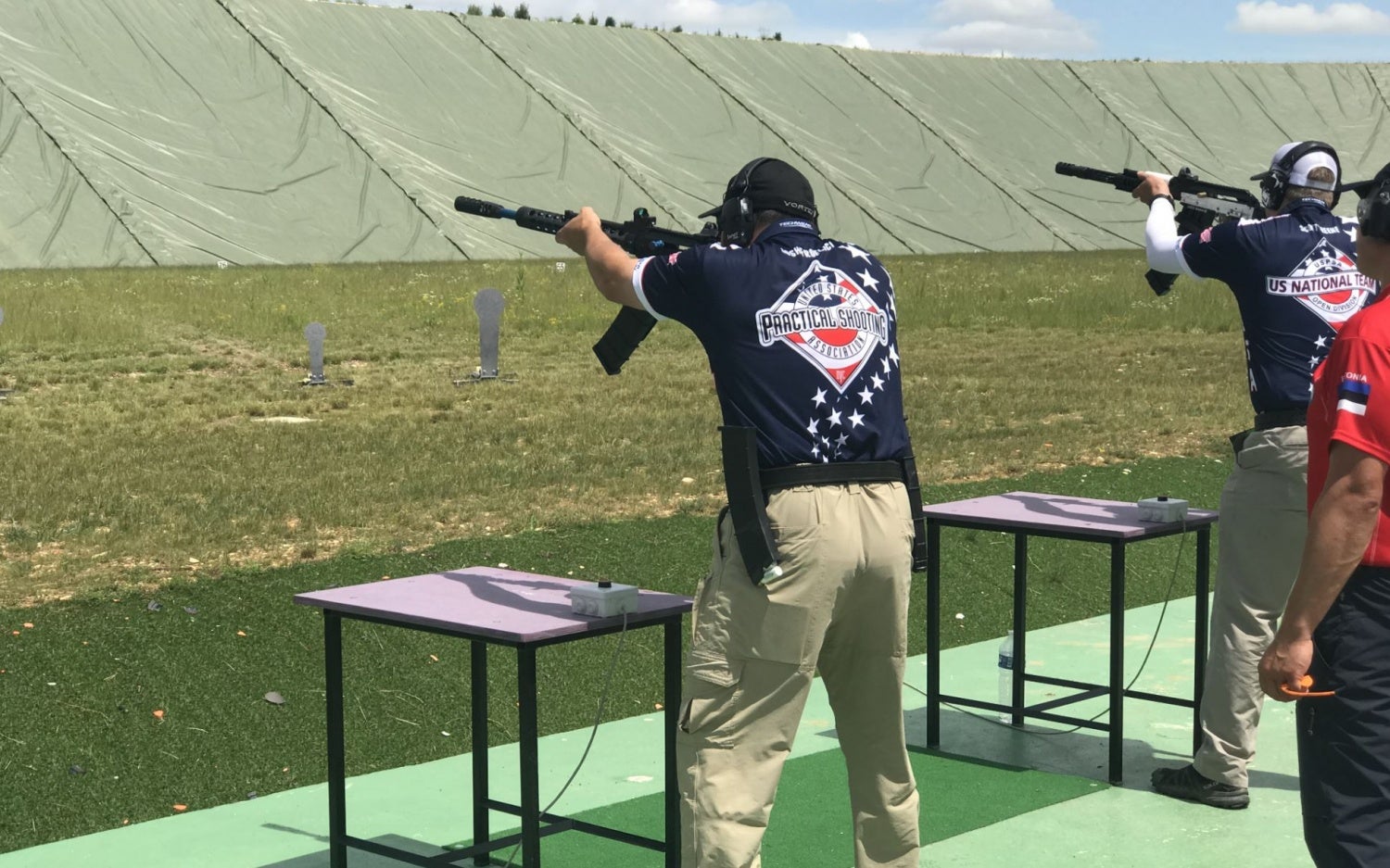
Did you crash any stage?
“I did indeed. I shot a 40% and gave up 66 points on stage 13 Jerusalem which was a heavy buckshot stage with shots out to 32 yards. I made it a 2 position stage and shot it from the back corners which was a mistake. I should have made it a 3 position stage and would have avoided my 3 mikes and 2 no shoots.”
Unfortunately, as some competitors found out, a few of the stages had really tight DQ traps where it was really easy to break 90 degrees going back into the stage.
I presume you discovered this as well. Was this something you discussed in the squad and how did you plan for this?
“This was not a problem for me. We put targets right on the 180 line in the US. No problem. I understand that this creates opportunities for the shooter to “make a mistake”, but I believe this makes me stronger mentally to shoot in these conditions and perform well.”
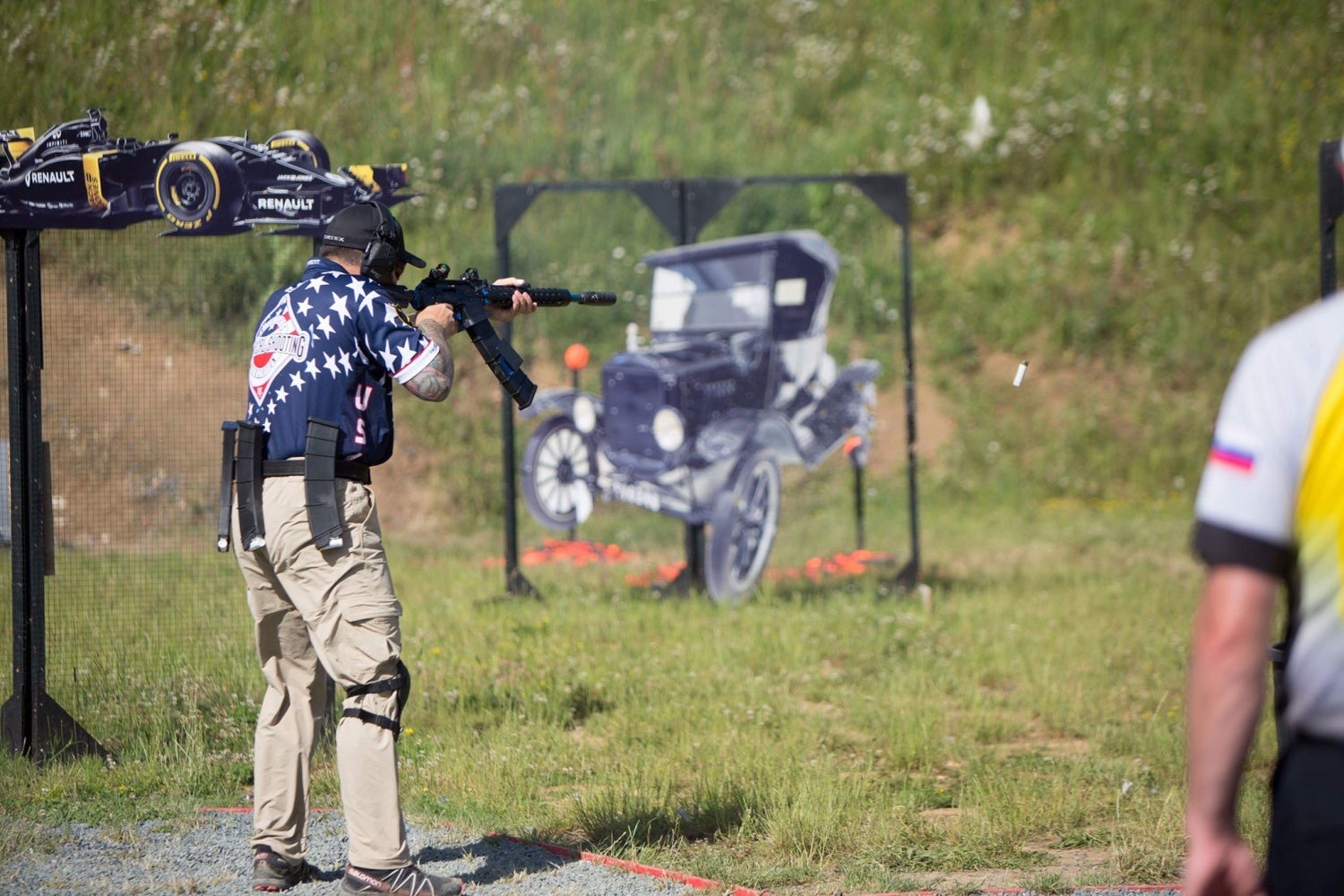
Picture by Todd Overland.
How much time do you normally spend on training?
“I spend a minimum of 1 hour a day training with significantly longer training sessions 3 days a week.”
How did you prepare specifically for the World Shoot Shotgun? Where do you normally train and how? Do you have a standard drill?
“I train in my basement for dryfire, in my backyard and at a local range for live fire. I trained close no shoots, far targets and firearm manipulation drills daily for this match.”
Let’s say I was interested in winning an IPSC World Shoot. Is there an eat, sleep, drink, yoga, train schedule you could recommend?
“I do eat a high protein low carb diet, do yoga, dryfire daily, livefire 4 days a week and train with the best shooters and coaches I can access. To win you can take no shortcuts and there is no easy way. blood, sweat and tears are on the road to a win like this and sacrifices as well. Shooting is my first priority every day I wake up. I go to work, hang out with family and relax when my training is complete for the day.”
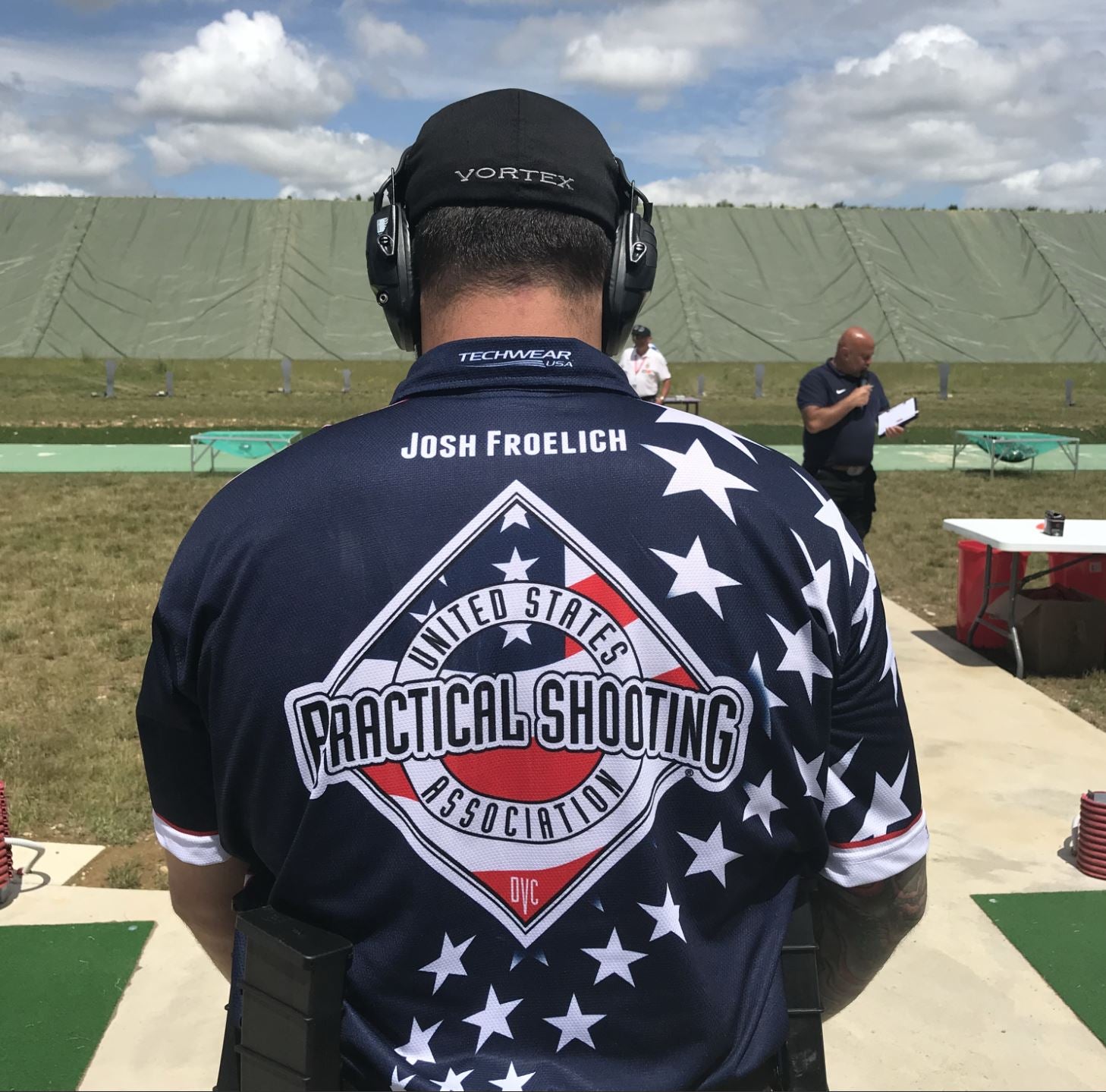
You have a really good “explosiveness” when going from a position into full speed to the next stop. Is this something you work on, and how?
“I do work on footwork daily and explosiveness weekly. I train with ladder drills, box jumps, sprints, lunges and body weight squats. All of these drills are designed around footwork and speed and they are a huge part of why I can accelerate quickly.”
What’s your next competition?
“I shoot Major matches (level IV or above) every month around the USA. My next big matches are Nordic/Vortex Trigun, Lucas Oil PCC and Wyoming Governers Match”
Thank you and good luck from The Firearm Blog!
You can find the results here: http://www.ipscmatches.org/2018sws/results/

IPSC Shotgun World Shoot, with USA, Czech Republic and Russia on the podium in Open division.

If you want to learn more, much more, please check the interview that 3GunShow did with Josh Froelich & Scott Greene.
YouTube: “IPSC Shotgun World Shoot Rundown with World Champions Josh Froelich & Scott Greene”
Unfortunately, I haven’t been able to find any videos of Josh shooting on YouTube, but this gives you an idea of the different stages from a Maxround shooter’s view.
Josh Froelich, and some other familiar faces… TFB interviewed Teemu Rintala before.
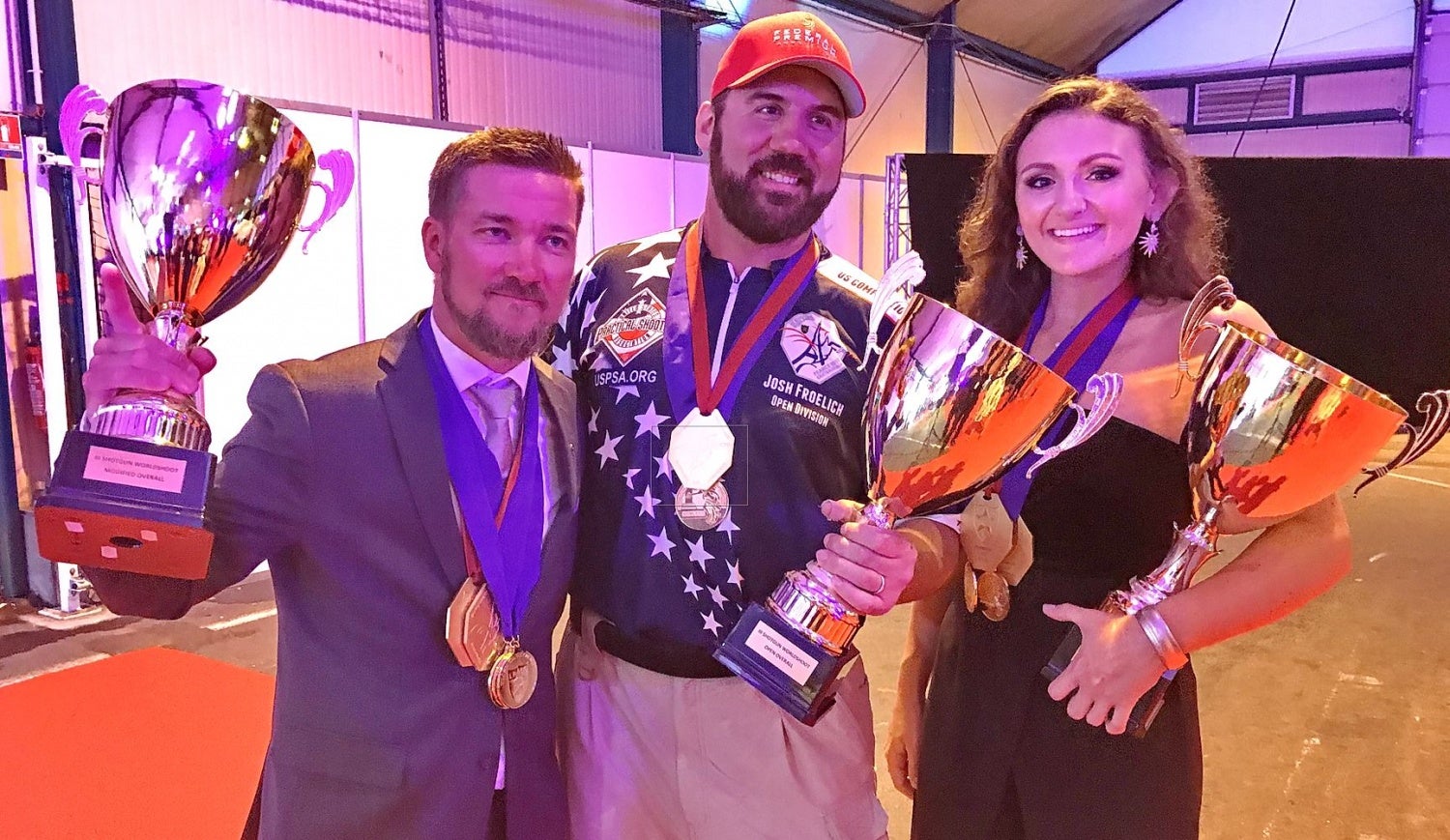
That’s all from Shotgun World Shoot 2018 this time.
 Your Privacy Choices
Your Privacy Choices
